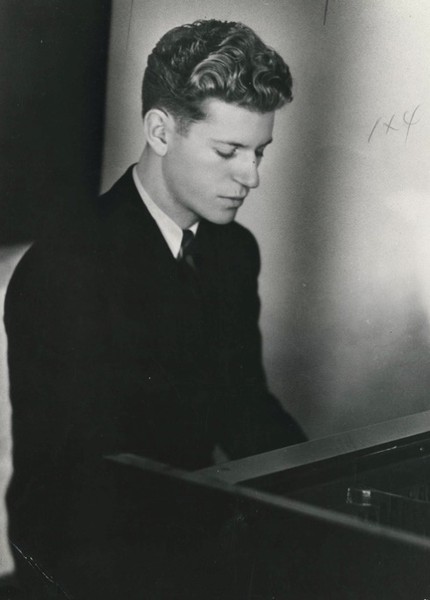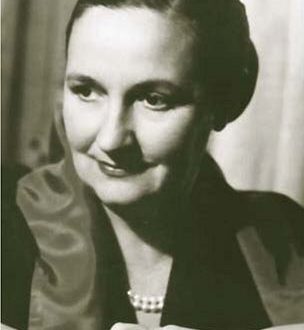
Monique de la Bruchollerie |
Monique de la Bruchollerie

Enormous strength lurked in this fragile, small woman. Her playing was by no means always a model of perfection, and it was not philosophical depths and virtuoso brilliance that struck her, but some kind of almost ecstatic passion, irresistible courage, which turned her, in the words of one of the critics, into a Valkyrie, and the piano into a battlefield. . And this courage, the ability to play, giving herself entirely to music, choosing sometimes unimaginable tempos, burning all the bridges of caution, was precisely that defining, albeit difficult to convey in words, feature that brought her success, allowed her to literally capture the audience. Of course, the courage was not groundless – it was based on sufficient skill achieved during the studies at the Paris Conservatory with I. Philip and improvement under the guidance of the famous E. Sauer; of course, this courage was encouraged and strengthened in her by A. Cortot, who considered Brusholri the pianistic hope of France and helped her with advice. But still, it was precisely this quality that allowed her to rise above many gifted pianists of her generation.
The star of Monique de la Brucholrie did not rise in France, but in Poland. In 1937 she took part in the Third International Chopin Competition. Although the seventh prize may not seem like a great achievement, but if you remember how strong the rivals were (as you know, Yakov Zak became the winner of the competition), then for a 22-year-old artist it was not bad. Moreover, both the jury and the public noticed her, her ardent temperament made a deep impression on the listeners, and the performance of Chopin’s E-major Scherzo was enthusiastically received.
A year later, she received another award – again not very high, the tenth prize, and again in an exceptional competition in Brussels. Hearing the French pianist in those years, G. Neuhaus, according to the memoirs of K. Adzhemov, especially noted her brilliant performance of Toccata Saint-Saens. Finally, her compatriots also appreciated her, after Brucholri played three piano concertos in the Paris Hall “Pleyel” in one evening, accompanied by an orchestra conducted by Ch. Munsch.
The flowering of the artist’s talent came after the war. Brucholrie toured Europe a lot and with success, in the 50s he made brilliant tours of the USA, South America, Africa, and Asia. She appears before the audience in a wide and varied repertoire, in her programs, perhaps, the names of Mozart, Brahms, Chopin, Debussy and Prokofiev can be found more often than others, but along with them she plays the music of Bach and Mendelssohn, Clementi and Schumann, Franck and de Falla , Shimanovsky and Shostakovich … The first concerto of Tchaikovsky sometimes coexists with her piano transcription of the Violin Concerto by Vivaldi, made by her first teacher – Isidor Philip. American critics favorably compare Breucholrie with Arthur Rubinstein himself, emphasizing that “her art makes one forget about the homeliness of her figure, and the strength of her fingers is grandiose. You have to believe that a woman pianist can play with the energy of a man.”
In the 60s, Brucholrie visited the Soviet Union twice and performed in many cities. And we quickly gained sympathy, having managed to show the best virtues of her game. “A pianist has the most important quality of a musician: the ability to captivate the listener, make him experience the emotional power of music with her,” wrote composer N. Makarova in Pravda. Baku critic A. Isazade found in her “a happy combination of a strong and mature intellect with impeccable emotionality.” But along with this, exacting Soviet criticism could not fail to notice the pianist’s sometimes mannerisms, a penchant for stereotypes, which had a negative impact on her performance of major works by Beethoven and Schumann.
A tragic incident interrupted the artist’s career: in 1969, while touring in Romania, she was in a car accident. Severe injuries permanently deprived her of the opportunity to play. But she struggled with the disease: she studied with students, participated in the work of the jury of many international competitions, developed a new design of the piano with a concave keyboard and an extended range, which, in her opinion, opened up the richest prospects for pianists.
At the very beginning of 1973, one of the European music magazines published a long article dedicated to Monique de la Brucholrie, under the sad heading: “Memories of a Living One.” A few days later, the pianist died in Bucharest. Her legacy recorded on the records consists of recordings of both Brahms concertos, concertos by Tchaikovsky, Chopin, Mozart, Franck’s Symphonic Variations and Rachmaninov’s Rhapsody on a Theme of Paganini, and a number of solo compositions. They preserve for us the memory of the artist, whom one of the French musicians saw off on her last journey with the following words: “Monique de la Bruchollie! This meant: performance with flying banners; it meant: passionate devotion to the performed; it meant: brilliance without banality and selfless burning of temperament.
Grigoriev L., Platek Ya.





